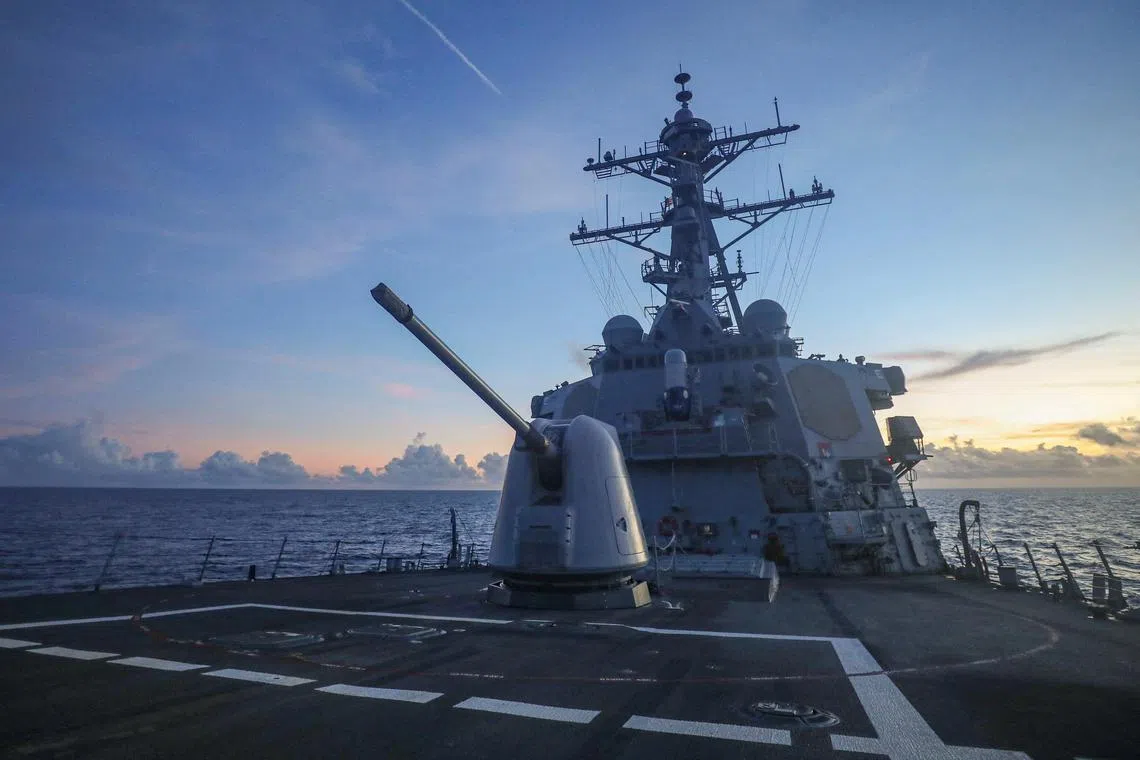War game shows US, Japan rolling back Chinese invasion of Taiwan, but at terrible cost
Sign up now: Get insights on Asia's fast-moving developments

The US has been beefing up its presence in the South China Sea as Beijing dials up its rhetoric against Taiwan.
PHOTO: REUTERS
Follow topic:
The United States and Japan would be able to roll back a Chinese invasion of Taiwan but not without suffering heavy losses in just two weeks of fighting.
A tabletop war game conducted by Japan’s Sasakawa Peace Foundation showed the US losing up to 19 ships and about 400 warplanes, and seeing close to 11,000 of its soldiers either killed or wounded.
China, on the other hand, paid for its attempt to seize Taiwan with 156 warships, including two aircraft carriers, along with 168 fighter jets and over 40,000 soldiers either killed or wounded.
Japan, meanwhile, lost 144 warplanes, 15 ships and some 2,500 soldiers.
Taiwan saw some 13,000 soldiers killed or wounded and 18 ships and 200 planes lost.
In the end, after so much loss for all sides, Taiwan remained a self-ruled island.
The war exercise – held in January – was reported by Japan’s Nikkei newspaper this week.
The simulation imagined an attempt by China to invade Taiwan via an amphibious assault in 2026.
It assumes a scenario where China establishes a command centre for the invasion, and the US responds by sending its aircraft carrier battle groups to areas in and around Taiwan.
Japan is roped into the conflict, as it allows US troops to use its military bases and civilian airports
After two weeks, China is seen being overwhelmed by the joint US-Japan response and resistance in Taiwan. Its military supply from the mainland is cut off and it is unable to gain control of the airspace over Taiwan.
The result of this exercise mirrors a similar one done in 2022 by the Centre for Strategic and International Studies (CSIS),
Other variables
Nikkei reported that both the Sasakawa and CSIS simulations are premised on the military arsenals that all four parties involved currently have.
“An actual outcome in 2026 could be different if China significantly boosts its military power,” it said.
The two simulations preclude the use of nuclear weapons.
They also do not take into account the involvement of the Philippines, where the US has been expanding its military presence,
The Philippines and fellow Asean members Vietnam, Malaysia and Brunei are locked in disputes with China over parts of the South China Sea.
In January, General Mike Minihan, head of the US Air Mobility Command, was quoted as saying in a leaked memo that the US could be at war with China over Taiwan as early as 2025.
He said elections in the US and Taiwan in 2024 could provide China a pretext to invade Taiwan, a self-ruled island that China considers its own.
The memo was written off by many analysts as offering no evidence beyond Gen Minihan’s “gut” and crude assessments.
General Charles Brown, the US Air Force’s chief of staff, said in February that a war with China over Taiwan was not “imminent or inevitable”.
Speculation about when a military conflict in the Taiwan Strait might break out “is not necessarily helpful”, he said.
Predictions of a Chinese invasion of Taiwan have been surfacing with more frequency since then US House Speaker Nancy Pelosi travelled to Taipei in August 2022. Her visit sparked unprecedented military exercises by China


